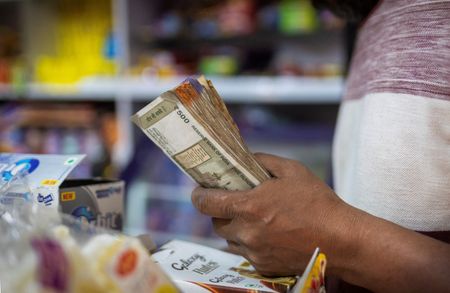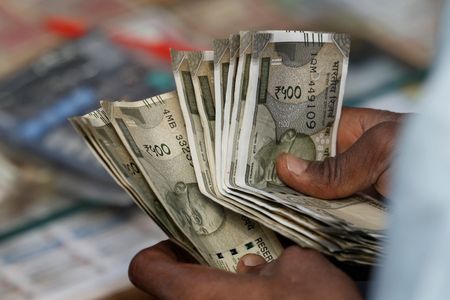By Jaspreet Kalra
MUMBAI (Reuters) – The Indian rupee stayed on the defensive for much of the week and nursed modest losses on Friday as likely foreign portfolio outflows added to pressure from rolling tariff threats from the White House.
The rupee ended at 85.80 on Friday against its close at 85.6350 in the previous session, down nearly 0.5% on the week.
U.S. President Donald Trump sent out letters to trading partners including Japan, South Korea, Canada, Brazil, and the Philippines, among many others this week, declaring levies that would go into effect starting August 1.
While the tariff announcements kept traders on their toes, the market reaction was relatively subdued compared to April when Trump had unveiled a broad set of reciprocal levies and later delayed their implementation.
India is among the few countries that are still negotiating a trade deal with Washington with a delegation expected to visit the United States soon for talks.
An extended deadline to implement tariffs has stoked hopes about negotiations with trading partners but “there is little risk priced for this not panning out so well,” MUFG said in a note.
With the U.S. economy showing resilience and the risk of tariffs spurring inflation on the horizon, the dollar may again start to benefit from yield differentials, the note added.
The dollar index rose 0.2% on the day and was on course for its first weekly advance in three while Asian currencies traded mixed.
On the day, India’s benchmark equity indices ended in the red, troubled by disappointing earnings from bellwether IT firm Tata Consultancy Services, while the benchmark 10-year bond reversed early losses to last quote a tad higher on the day.
Dollar sales from a large state-run bank helped the rupee weather the pressure on Friday and hold above the 86 mark, similar to the previous session, a trader at a large private bank said.
(Reporting by Jaspreet Kalra; Editing by Ronojoy Mazumdar)








